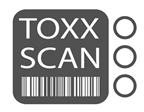Warnings about hormone disruptors cause a lot of concern. It is about time that the risks were made clear and substances forbidden. According to a new study released by the Endocrine Society, exposure of EDC‘s – Endocrine Disruptor Chemicals, is costly. A conservative estimate shows that EDC’s cost the EU €157 billion annually.
A team of 18 scientists from eight countries, have assessed the economic impact related to exposure. They took into account health care expenses and lost earnings due to specific conditions which gives us a conservative cost to the EU. This does not take into account the millions of people whose health is affected by problems like infertility, male reproductive dysfunction, birth defects, obesity, diabetes and cardiovascular disease. Nor the effect of EDC’s on neurobehavioral and learning disorders.
– This study is a wake up call for policymakers and shows that the issue of EDCs needs to be pushed further up the political agenda. Limiting exposure would likely lead to significant economic benefits, says Frida Hök, ChemSec policy advisor.
A wide range of EDCs can be found in consumer products such as water bottles and can linings, plastic products, cosmetics, as well as in flame-retardants and pesticides. In fact nearly everyone has detectable amounts of EDCs in their bodies, according to the Endocrine Society. We need better laws. We need correct labelling. We need barcodes that reveal all of this.
A chemical that is an EDC may be disclosed on a product lable but it’s hard to know the difference between one substance and another. ChemSec’s SIN list and Sinmilarity tool is an important tool for providing you with this knowledge. Toxxscan can makes all chemical information easily accessible and provides an interface and software analysis for producers who want to avoid the use of chemical risks.
Author: Ingrid Franzon



Recent Comments